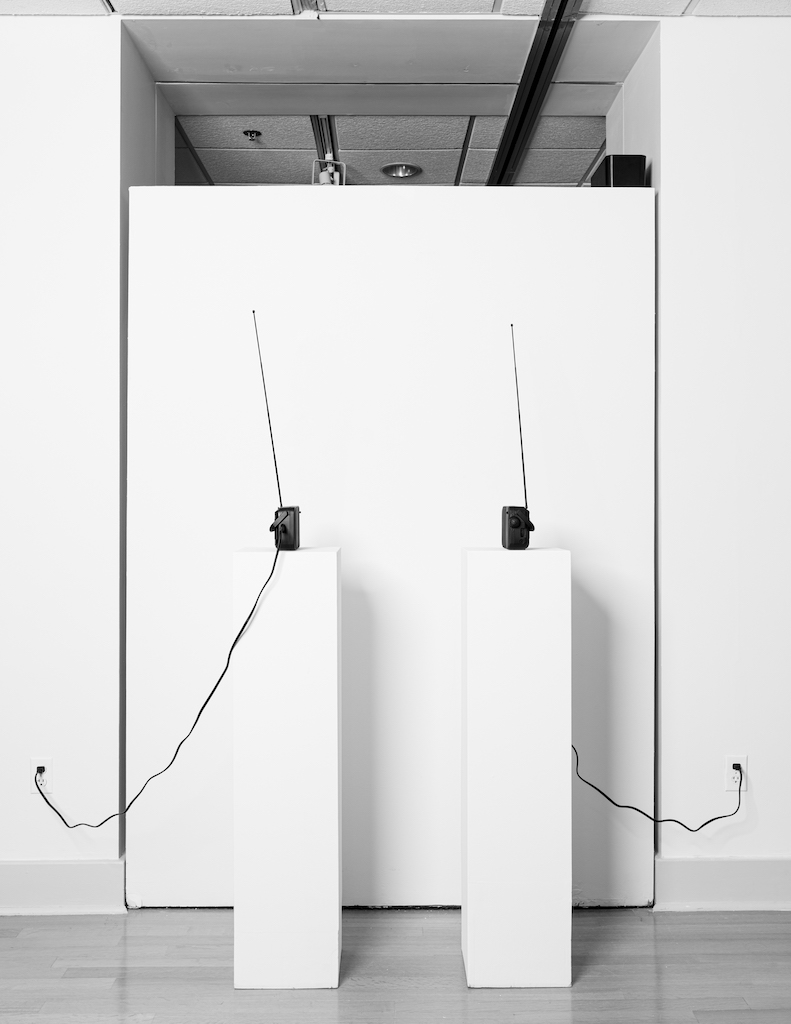
Kei Ito’s solo exhibition Teach Me How to Love This World at the University of Maryland’s Stamp Gallery is a somber exploration of generational trauma as a third generation hibakusha (atomic bomb victim), and the repercussions of war. Ito’s practice is based in camera-less photography, found objects, and text-based artworks.
Two found object-works create haunting mechanical sounds. “Talking Heads,” is an installation of two analogue radios on chest-high pedestals with an eerie static noise and sporadic voices that sound like antique radio recordings, where “Who will be the next sacrifice of peace?” and “Who will be the next sacrifice of war?” is repeated slowly over and over.
The static, mechanical and human sounds build an image of a barren landscape, and the repetition of each phrase feels both uncertain and utterly hopeless since it suggests an unending possibility of conflict. In addition, intermittently bomb raid alarms can be heard echoing through the gallery.

Another mechanical staccato sounds throughout the exhibition space through “Teach Me How to Love This World,” two carousel projectors with rhythmic clicks. The machines project word combinations onto the wall, which create unending mini concrete poems. While on the left side possessive pronouns fade in, on the right nouns slowly fade out creating an undulating effect as the viewer is lulled from one word to the next. Some combinations are:
OUR DREAM
YOUR DREAM
YOUR HISTORY
HER HISTORY
[…]
MY INVASION
THEIR INVASION
THEIR MONUMENT
OUR MONUMENTS
The words are all in capital letters, in a sans-serif font channeling the focus on the perceived meaning of the words. The simplicity and vagueness also leaves the possibility of narrative open. The projections feel like concise declarations, and the possessive pronouns shed light on both the collective and individual experiences and sacrifices of war.


